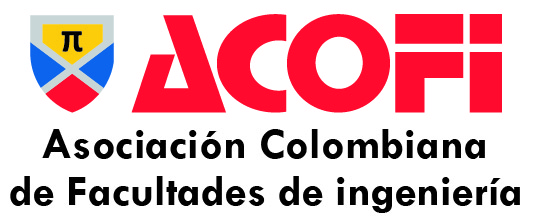Active learning model for the development of problem identification, formulation and resolution skills in industrial engineering
DOI:
https://doi.org/10.26507/rei.v4n7.75Keywords:
ABET outcomes, engineering education, active learning engineeringAbstract
The design of effective organizations is relevant to the industrial engineer role who is involved in the conception of this kind of social systems. The objective is to reinforce the identification, formulation and solving engineering problems skills. Given the above, this article proposes an active learning model for students that allow them to integrate different skills related to the capacities of observation, design and implementation of engineering solutions. The paper consists of four parts: 1) the identification of some of the skills required by engineers, 2) a proposal for active learning model that reinforces these skills, 3) two cases of application of the model in industrial engineering; 4) conclusions.Downloads
References
ABET. (2007). Criteria For accrediting engineering programs. Engineering accreditation commission [en línea]. Consultado el 30 de octubre de 2008 en: http://www.abet.org
Acevedo, J., Barros, R., Ramírez, C., Realpe, N. (2009-enviado para publicación). Engineers and their role in public policy: An active learning experience for enhancing the understanding of the State. European Journal of Engineering Education.
Barros R., Ramírez, C., Stradaioli, K. (2008). Learning about the influence of certain strategies and communication structures in the organizational effectiveness. SEFI 36th Annual Conference, Aalborg, Dinamarca, Julio.
Barros, R. (2009-enviado para publicación). Making computer-supported collaborative learning inclusive to improve students’ mathematical problem-solving skills. Ubiquitous Learning: An International Journal, Vol. 1, No. x, pp. xx-xx.
Cohen, A., Ennis, W., Wolkon, G. (1961). The Effects of Continued Practice on the Behaviors of Problem- Solving Groups. Sociometry, Vol. 24, No. 4, pp. 416-431.
De Laat, M., & Lally, V. (2005). Investigating group structure in CSCL: some new approaches. Information Systems Frontiers, Vol. 7, No. 1, pp. 13-25.
Deutsch, M. (1968). The Effects of Cooperation and Competition upon Group Process. In: Cartwright and Zander (eds). Group Dynamics: Research and Theory. Third Edition. Harper & Row, Publishers. New York.
Duque, M. (2006). Competencias, Aprendizaje Activo e Indagación: Un caso práctico en ingeniería. Revista Educación en Ingeniería. Asociación Colombiana de Facultades de Ingeniería ACOFI. No. 2, pp. 7-18.
Espejo, R., Schuhmann, W., Schwaninger, M., & Bilello U. (1996). Organizational transformation and learning: A cybernetic approach to management. Chichester, UK: Wiley.
Hernández, J., Ramírez, M. (2008). Innovation and Teamwork Training in Undergraduate Engineering Education. The fair and the contest: milestones of innovation. 8th International Workshop ALE 2008, Bogotá, Colombia, Junio.
Illeris, K. (2003). Towards a contemporary and comprehensive theory of learning. International Journal of Lifelong Education, Vol. 22, No. 4, pp. 396–406.
Kolb, D. (1984) Experiential Learning: experience as the source of learning and development. Upper Saddle River, NJ:Prentice-Hall.
Kreijns, K. Kirschner, P., & Jochems, W. (2003). Identifying the pitfalls for social interaction in computersupported collaborative learning environments: a review of the research. Computers in Human Behavior, Vol. 19, pp. 335-353.
Laverie, D. (2006). In-Class Active Cooperative Learning: A way to Build Knowledge and Skills in Marketing Courses. Marketing Education Review, Vol. 16, No. 2, pp. 59-76.
Ma, J., Nickerson, J. (2006). Hands-on, simulated, and remote laboratories: A comparative literatura review. ACM Computing Surverys, Vol. 38, No. 3, Article 7.
Meyers, G., Jones, T. (1993). Promoting Active Learning Strategies for the College Classroom. San Francisco: Jossey-Bass.
National Research Council. (2003). Inquiry and the national science educational standards. National Academy Press.
Ramírez C., Bermeo J., Barros R., Hernández R., Díaz F. (2008). Evaluating the impact of role-playing game in active learning in engineering education: a case study. 8th International Workshop ALE 2008, Bogotá, Colombia, Junio.
Reyes, A., Zarama, R. (1998). Learning by playing: An application of the process of embodying distinctions. In: World Multiconference on Systemics, Cybernetics and Informatics: SCI98, Orlando, FL.
Salkind, N. (2004). An introduction to theories of human development. California: Sage Publications.
Shaw, M. (1976). Group Dynamics: The Psychology of Small Group Behavior. Second Edition. McGraw Hill Book Company. United States of America.
Downloads
Published
How to Cite
Issue
Section
License
Total or partial reproduction of the documents published in the journal is authorized only when the source and author are cited.
| Article metrics | |
|---|---|
| Abstract views | |
| Galley vies | |
| PDF Views | |
| HTML views | |
| Other views | |








